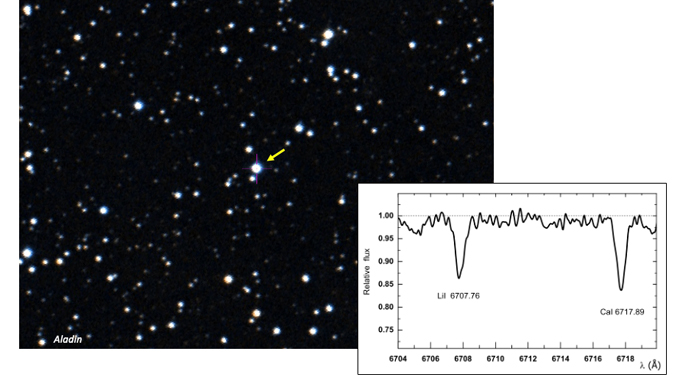
For two decades, an international team of astronomers led by R. Pierre Martin, an associate professor of astronomy from the University of 91桃色appʻi at Hilo, has studied hundreds of Cepheids distributed across the Milky Way. Cepheids, pronounced “sef-ee-eds,” are large stars that pulsate, or “beat,” in a regular pattern over several hours to several days. They are critical in astronomy because their brightness varies, helping scientists measure distances in space and understand the structure of our galaxy.

During a recent survey conducted on Maunakea, Martin and his team observed an abundant amount of lithium within V470 Cas, a faint Cepheid star located in the Cassiopeia constellation. The team identified it while utilizing an instrument at the Telescope.
“It pulsates with a period of about 21 hours and has four times the mass of our Sun,” Martin explained. “Contrary to what is observed in almost all of Cepheid stars, the group discovered that the spectral line of lithium…is very prominent for V470 Cas.”
Rare find
Astronomers consider the discovery of abundant lithium within this star extraordinary because only seven other Cepheids among several thousands in the entire galaxy are known to display such a prominent lithium line. The researchers discovered that V470 Cas has the third highest abundance value of lithium ever measured in a Cepheid.
“We are facing a dilemma: [either] Cepheids with lots of lithium should not exist at all, or rather [they] should be very numerous across the galaxy. This discovery of the lithium-rich V470 Cas, adding to a very select group of Cepheid stars, suggests that there is something we do not fully understand yet in the evolution of these stars. An enigma to solve.”
Martin’s research team includes Ukrainian astronomers Valery Kovtyukh and S. M. Andrievskii (Mechnikov National University) and Sergey Korotin (Crimean Astrophysical Observatory). The astronomers recently published their findings in .
For more go to .
—By Susan Enright
